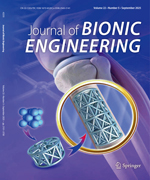In this paper, we studied the acceleration behavior of a quadruped animal during a galloping motion. Because the development of many quadruped robotic systems has been focused on dynamic movements, it is obvious that guidance from the dynamic behavior of quadruped animals is needed for robotics engineers. To fulfill this demand, this paper deals with analysis of the galloping motions of a domestic cat, which is well known for its excellent acceleration performance among four-legged animals. Based on the planar motion capture environment, the movement data of a galloping feline was acquired and the dynamic motions were estimated using a spring-mass system. In particular, the effects of the position and angle of the center-of-mass of the cat, angular displacement of the spine, and angular velocity of the spine were analyzed and are discussed below. Through this process, it was possible to understand the dynamic movement characteristics of the cat, and to understand the relationships between, and the influences of, these parameters. From this analysis, we provide significant data applicable to the design of joint movements in quadruped robot systems.

 Table of Content
Table of Content
 Table of Content
Table of Content